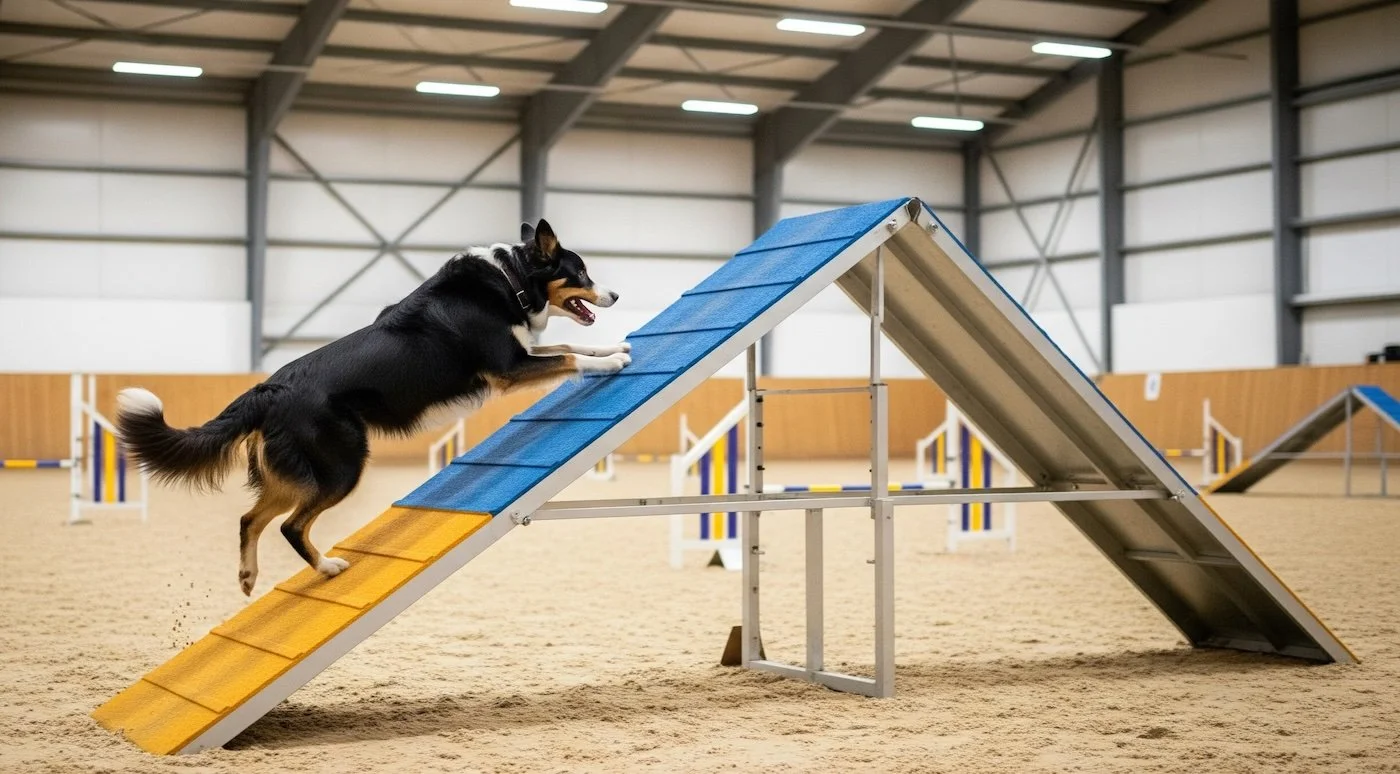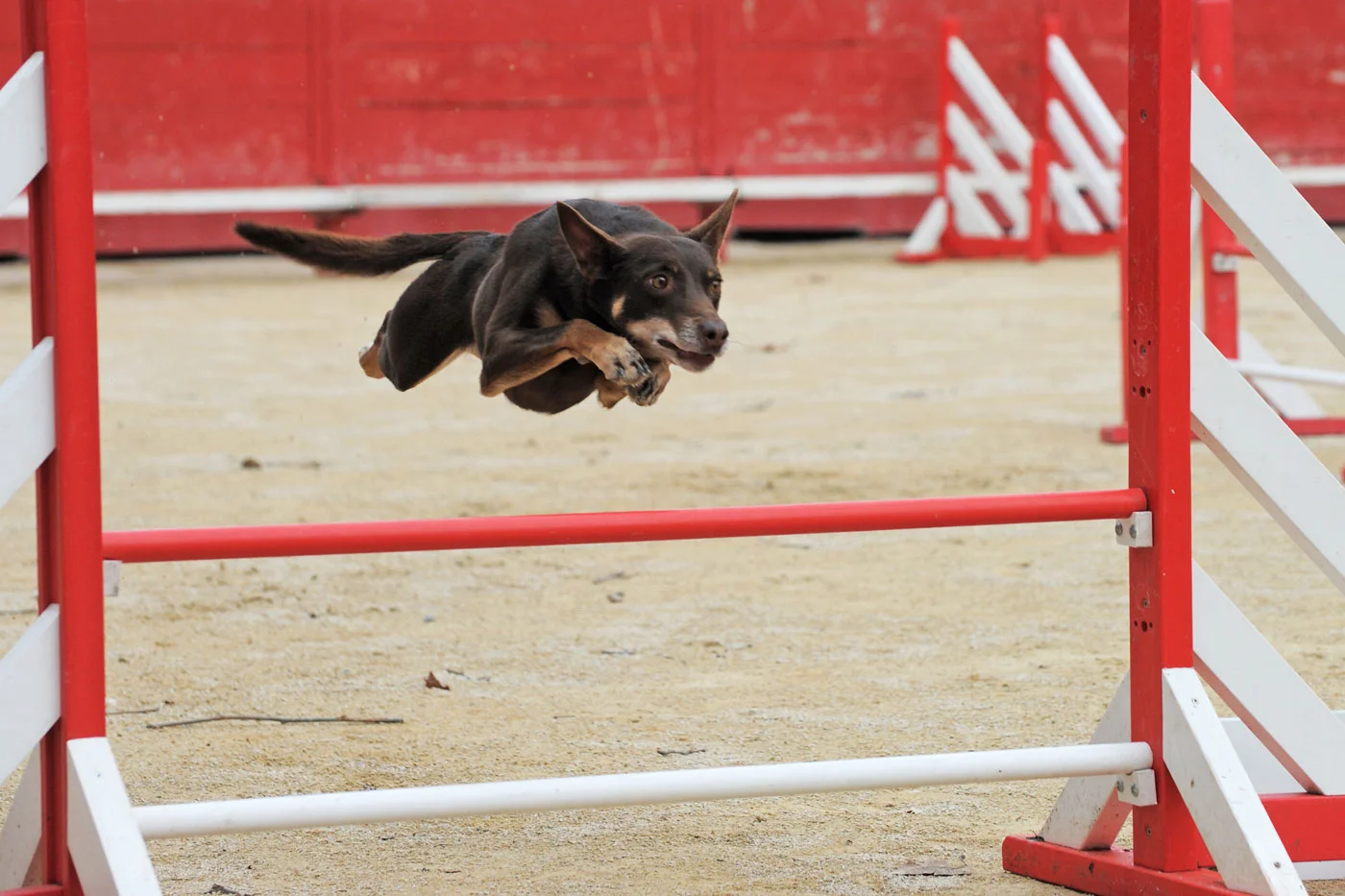As you know, AI tools are everywhere: ChatGPT, Copilot, Dall-e and thousands of others. Translate and generate text, generate images or videos or music, or all of it combined. Many tools are based on the basic idea of going through massive amount of data (like the public internet) and then providing answers based on that.
I wanted to test few simple Copilot prompts - basically simply ask one AI tool to answer questions as an agility coach.
Additionally this image above is generated by the prompt: “Please create a photo of an agility trainer training an agility dog“.
But let’s see how Copilot answers as an agility coach!
What are the Top 5 agility skills to develop with your dog?
As a dog agility trainer, I’d focus on developing the following top 5 agility skills with your dog:
Jumping: This fundamental skill involves teaching your dog to jump over hurdles of varying heights and lengths.
Tunnel Navigation: Tunnels can be intimidating for dogs at first, but they’re a thrilling part of agility training.
Weave Poles: Weaving through poles requires precision and coordination.
A-Frame: The A-frame is a large obstacle that dogs must climb up and down.
Dog Walk: This skill involves walking on a narrow plank elevated off the ground.
Remember, the foundation of all these skills is building a strong connection with your dog and making training a fun and rewarding experience. Happy training!
Okay. Does this sound reasonable?
I wanted to know more, so I asked this additional question:
Why did you choose these 5 topics as the most important agility skills?
The five agility skills I mentioned are considered foundational for several reasons:
Jumping is a core component of agility competitions and is one of the first obstacles that dogs learn. It helps in developing coordination and athleticism.
Tunnel Navigation is crucial because it tests a dog’s ability to follow commands through an obstacle where they can’t see their handler, fostering trust and focus.
Weave Poles are a unique challenge that no other canine sport offers. They require dogs to move in a way that’s not natural to them, which demonstrates their training and flexibility.
The A-Frame is a test of a dog’s confidence and teaches them to navigate height and incline, which is important for their overall agility abilities.
The Dog Walk teaches precision and careful movement, as the dog must stay on a narrow path, which is excellent for developing balance and control.
These skills are not only essential for competition but also for ensuring that the dog enjoys a full range of motion and mental stimulation. They also help to strengthen the bond between the dog and the handler, as they must work closely together to navigate the courses successfully.
Okay, I think we got more precise answers this time.
Bonus question: why do you like agility? List 3 reasons.
While I don’t have personal experiences or preferences, I can share three reasons why agility is often enjoyed by trainers and their dogs:
Bonding: Agility training strengthens the bond between a dog and its handler. It requires trust, communication, and teamwork, which can deepen the relationship.
Mental Stimulation: Agility courses are like puzzles that dogs get to solve. They provide mental stimulation which is just as important as physical exercise for a dog’s overall well-being.
Physical Fitness: Agility is a great way to keep dogs physically fit. It involves running, jumping, and navigating various obstacles, which can help maintain a healthy weight and improve overall health.
These aspects make agility a rewarding and enjoyable activity for both dogs and their handlers.
OK, sounds good. Do you agree with these? Could there be any interesting use cases for utilising ChatGPT or similar tool with agility?
Even with all the information in the world any AI cannot (yet?) enjoy the actual act of training and competing with a dog in agility.



![How many jump cues do you need for your agility dog? [Template]](https://images.squarespace-cdn.com/content/v1/5a59dc41e9bfdf26441e3fa4/1638883948287-VIS0G0W20LZJ7HT3FBJL/verbal+cues+fair+2+www.jpg)







